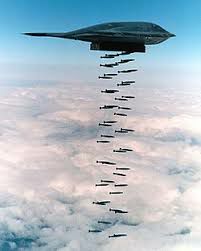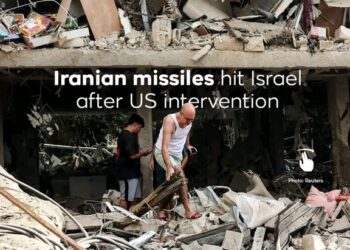
The B-2 Spirit, often referred to as the “Stealth Bomber,” is one of the most advanced and secretive military aircraft in the world — and also among the most expensive. Developed by Northrop Grumman for the United States Air Force, the B-2 is a strategic bomber capable of delivering both conventional and nuclear weapons. But beyond its cutting-edge stealth technology and immense capabilities lies a deeper reason why the U.S. government refuses to sell it — not even to its closest allies.

What is the B-2 Bomber?
The B-2 Spirit is a long-range, heavy-payload stealth bomber designed to penetrate dense anti-aircraft defenses. First introduced in 1997, the aircraft can travel over 6,000 nautical miles without refueling and can carry up to 40,000 pounds of weapons, including nuclear payloads. Its most remarkable feature is its stealth technology, which makes it nearly invisible to radar, giving it a strategic edge in warfare.
The B-2’s unique flying-wing design, coated with radar-absorbent material, allows it to evade even the most sophisticated enemy air defense systems, making it the centerpiece of America’s strategic deterrence capabilities.
How Much Does It Cost?
The B-2 is often dubbed the most expensive aircraft ever built. The original procurement cost was around $737 million per unit, but when factoring in research, development, and maintenance infrastructure, the cost soars to over $2 billion per plane. Only 21 units were ever produced, making it one of the rarest and most elite aircraft in military aviation history.
Why America Won’t Sell the B-2
Despite its alliance with countries like the United Kingdom, Japan, and NATO members, the United States has consistently refused to export the B-2 for several reasons:
1. National Security Concerns: The stealth technology embedded in the B-2 remains one of America’s most closely guarded military secrets. Allowing any form of transfer risks exposing that technology, even to allies.
2. Nuclear Capability: The B-2 is specifically designed to deliver nuclear weapons, and sharing such capability would conflict with global non-proliferation treaties and strategic doctrines.
3. High Cost and Maintenance: The astronomical cost of building and maintaining the B-2 makes it an unrealistic purchase for most countries. Additionally, it requires highly specialized maintenance, which is centralized in the U.S.
4. Limited Fleet: With only 20 operational aircraft (after one crash in 2008), the B-2 fleet is incredibly small. Each plane is a strategic asset, and none are available for export without compromising the U.S. Air Force’s deterrence posture.
What’s Next?
The B-2 Spirit is expected to remain in service until at least 2032, when it will be gradually replaced by the next-generation B-21 Raider, which promises to be more cost-effective while retaining advanced stealth capabilities. However, much like its predecessor, the B-21 is also expected to be kept exclusively for American use.
In a world of shifting alliances and rising global tensions, the B-2 remains a symbol of America’s unmatched air power — and a reminder of the high stakes in military technology secrecy.











